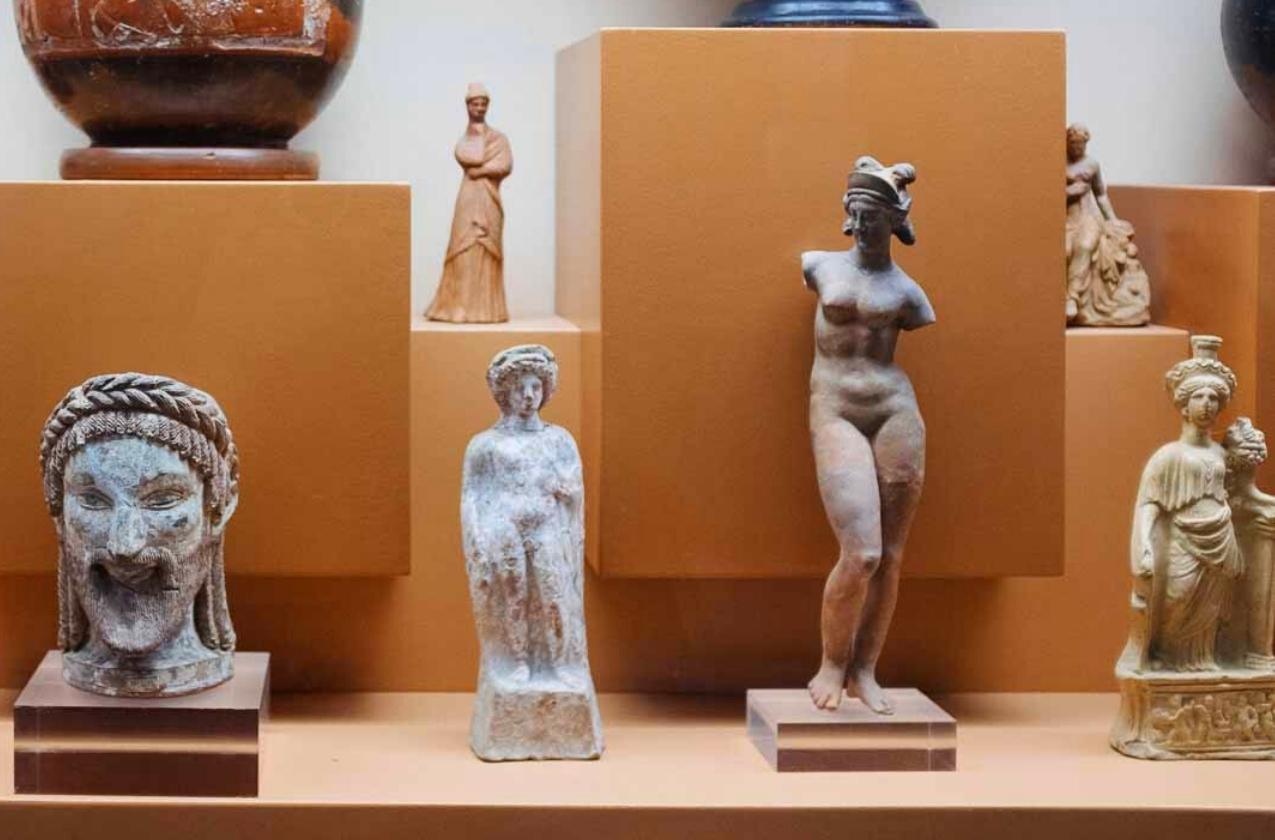The Odessa Archaeological Museum is one of the oldest archaeological museums in Ukraine. Since 1997, the Museum has functioned also as an institute for scientific research into the archeology of primitive society in the Northern Black Sea region and the archeology of the Middle Ages.
The permanent collection of the Museum numbering some 200 thousand artefacts is by far the largest and most comprehensive collection of the archaeological objects related to the ancient history of the Southern Ukraine spanning from the Stone Age to the Middle Ages. The museum is also a home to the collections of classical antiquity from Greece, Rome and Cyprus as well as ancient Egypt. There is the richest collection in Ukraine of the antique period - magnificent lacquer and other ceramics, sculptures of gods, heroes and real people, household items.
The library department of the museum holds in excess of 33 thousand books and journals. In 2008 the permanent collection of the Odessa Archaeological Museum has been assigned the status of the National Treasure by the Ukrainian Government.



In this article we will describe top ten the most valuable exhibits of the museum. We strongly recommend to visit the museum in the nearest future and see everything with your own eyes.
1. The most valuable exhibit is a stele of a mound near the village of Usatovo. The name of the village gave the name to the whole culture of the Bronze Age: Usatovo culture. This is one of the oldest tombstones of over-mound steles, on which the ancient artist depicted a man, a deer, and dogs.
The Usatovo culture is a late variant of the Cucuteni–Trypillia culture which flourished northwest of the Black Sea from 3500 BC to 3000 BC. From native Neolithic elements it shares flat graves, figurines and painted ceramics, while it shares tumulus burials, horses and shell-tempered coarse wares with steppe cultures.
2. An exhibit of Sabatinovo culture, an element of a warrior's burial, XVI-XIII centuries. BC. Metal items are very rarely found in burials of the Sabatinovo culture, and the exact analogies of this exhibit are not known at all.
Sabatinovo culture an archaeological culture located in the Northern Black Sea region, was named after the village of Sabatinovka, located in the vicinity of the village of Savran, where settlements of the Late Bronze Age (XVIII-XII, according to other estimates, XVI-XII centuries BC) were discovered. e.).
3. Collection of ancient Greek vases and sculptures of the 4th-5th centuries. BC, in which the Black-figure and Red-figure vase painting was used - when a drawing was either applied with black varnish, or a background was made from it.
Black figure vase painting had been developed in Corinth in the 7th century BC and quickly became the dominant style of pottery decoration throughout the Greek world and beyond. Red figure is, put simply, the reverse of the black figure technique. Both were achieved by using the three-phase firing technique. The secret is lost. Made in modern conditions, it quickly deteriorates, and these ancient items are already several thousand years old.

4. A sculpture of Aphrodite and Eros and a fragment of a vase from the Serpent Island, which contains the names of the potter Nikosthenes and the artist Epictetus. On the Serpent Island in ancient times there was a temple of the god of trade and navigation Achilles Pantarch.
5. Armor, shield and other items of armor of a Scythian warrior from metal plates, VII-III centuries. AD.
6. A slab with a runic inscription of the 12th century, found on the island of Berezan, is a tombstone for a Swedish merchant. The inscription on it reads: "Grani built this hill after Karl, his comrade." And in total, only four runestones are known in the former territory of the Soviet country. One of them is in the Odessa Museum.

7. Gold bowl from the middle of the 2nd millennium BC. Its weight is 763 grams of pure gold. It was kept in the house of one of the peasants and was found quite by accident.

8. Antique coins staters made of electrum - a natural alloy of gold and silver, which were minted in the IV century BC. Found buried in a jug during the construction of a house in the village of Orlovka, Odessa region.
9. In the Golden Storeroom there is a unique exhibit - the goldsmith of Prince Vladimir Sviatoslavich called the Great, was Prince of Novgorod, Grand Prince of Kiev, and ruler of Kievan Rus' from 980 to 1015.
Only ten of them are known. On one side of the coin - Vladimir at the table, on the other - the image of Jesus Christ.

10. The museum houses the only collection of sarcophagi in Ukraine. The most beautiful is the wooden sarcophagus of the singer of the temple of Amun. The Odessa exposition presents its outer part, while the inner one is in the Kazan Museum. There is also a rare stone sarcophagus.






















